Drop + Grell TWS1X Review - Unmet Expectations
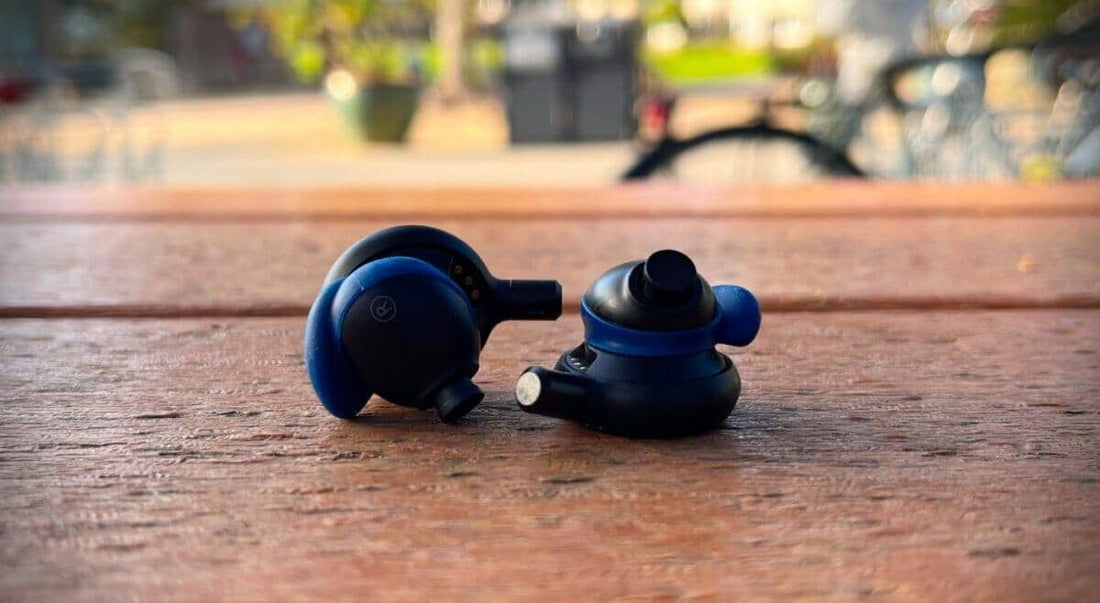
Introduction
Axel Grell; for those not familiar with this name, it has big implications in the headphone world. Grell was Sennheiser’s chief headphone engineer who put the company's name on the map with hits such as the legendary HD600/HD650 and the world’s most expensive headphone (at the time), the Orpheus. That in mind, it's not hard to imagine why there was a lot of fanfare when word got out that Grell was working on a TWS (truly-wireless-set) of all things! Here's where the TWS1X comes in. The model is a collaboration between Drop and Grell's new company, Grell Audio, with Drop supplying a mix of "wings" for the IEM that are intended to stabilize fit. Combined with a slew of features including SoundID (an app that allows users to custom-tailor the IEM's sound), the TWS1X promises big things for $200 and I'll be taking a look at whether it delivers.
This unit was provided for review by Drop. As always, what follows are my honest thoughts and opinions to the best of my ability.
In-the-Box
The Grell TWS1X arrives in a small, brown cardboard box with a sparse number of accessories:
- TWS1X w/ charging case
- USB-C charging cable
- Silicone tips s/m/l
- Foam tips m/l
- 3x pairs of wings
There’s a quick start guide included, but it doesn’t actually walk you through any of the more complicated functions. Consider me visually disinclined, but a lot of the included diagrams also didn’t make much sense to me.
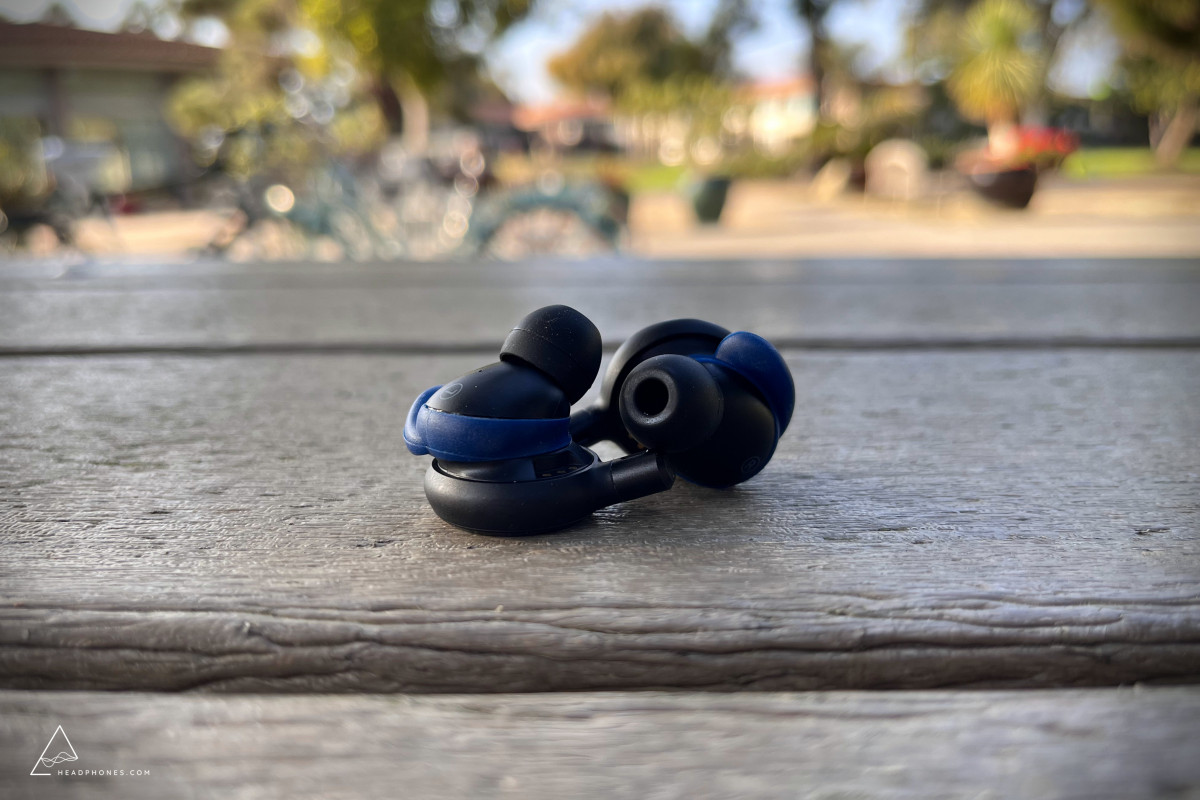
So how's it actually work?
Here’s the part where most reviews would bombard you with a myriad of tech talk. But that stuff would really just be me doing a bunch of copy-and-pasting and, ultimately, no substitute for how things actually perform in practice. So how do I put this? In my honest opinion, the TWS1X does not work well from a functional standpoint - like at all. I primarily used it with an iPhone 13 Mini and, in terms of the software alone, I ran into one hiccup after another while trying to set up the earbuds:
-
Updating to the latest 2.0 firmware using the SoundID app did not work even after following the on-screen instructions and numerous attempts. I had a similar issue pairing the TWS1X with my Android-based iBasso DX300 where it wouldn't pair in the SoundID app altogether. As a result, I was not able to take advantage (or test any) of the SoundID features out of the box.
-
The taps to control the TWS1X did not correspond with what the online manual stated or what they stated in SoundID.
-
Taps on the left bud were more or less random. Sometimes a single tap would put me in Transparency mode, sometimes it would put me in ANC mode, and sometimes a press would do nothing altogether.
-
The ANC mode barely worked. I say this in the sense that it didn't even cancel out low-frequency noise such as from a heater.
-
The transparency mode had constant hissing in the backdrop. Taking into account the awful tuning, it was basically moot for anything sans falling asleep to white noise.
Unfortunately, I do not appear to be alone in these complications. A friend who was also provided a review unit of the TWS1X tells me that the button mapping was broken altogether on his unit; basically, the right earbud did nothing and everything was controlled with the left earbud. A quick glance at the TWS1X's user reviews on Drop's site also seems to corroborate a lot of these issues. It's a shame because there is some cool stuff here that's very convenient, like the swipe for volume control and for forwards/backwards on tracks.
That said, after roughly three weeks with what was effectively a paperweight, I was finally able to update the TWS1X to the most recent 3.0 firmware. This firmware fixes some of the button mapping issues, although it is still not consistent 100% of the time and the software feels unrefined (for example, I was not able to apply the custom EQ profile in the SoundID app). Parasitic drain also appears to be an issue wherein the earbuds will not always shut themselves down when placed inside the case. In any case, you might infer that it's been quite the rollercoaster reviewing the TWS1X.
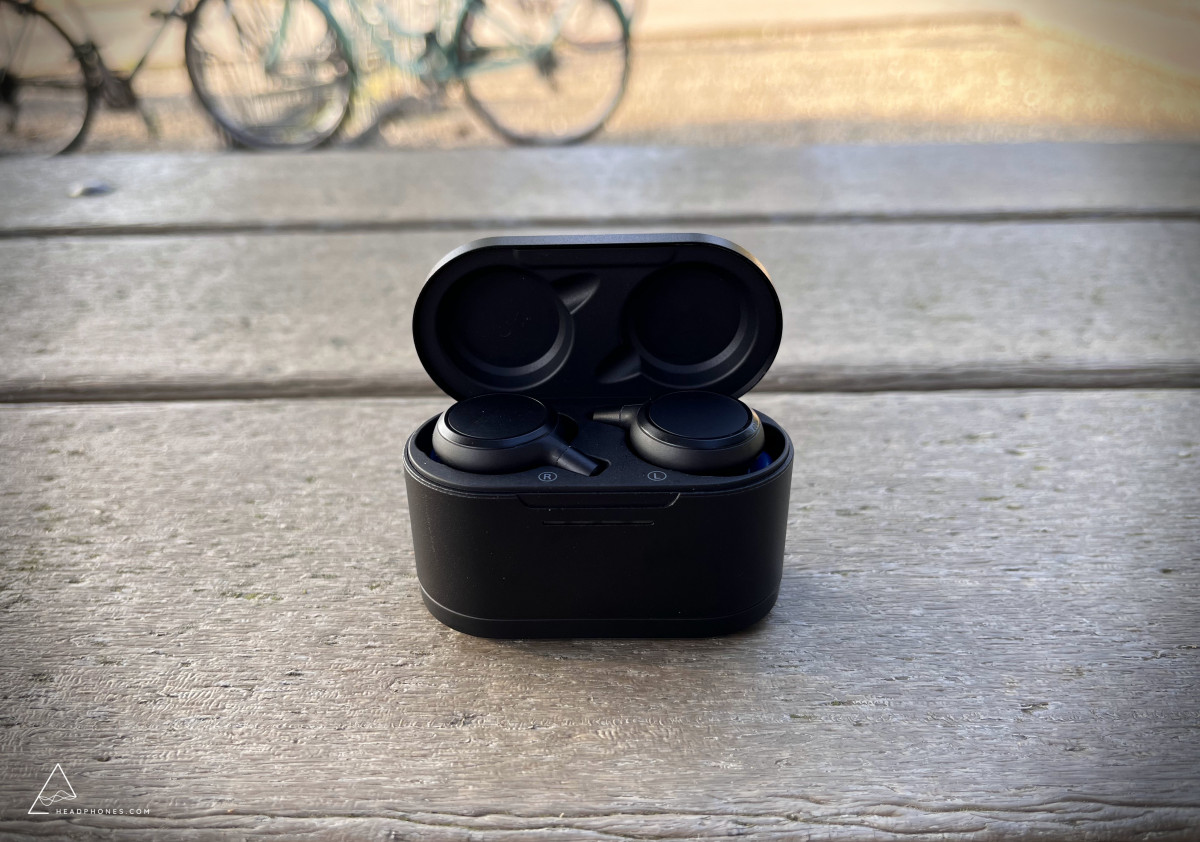
From a hardware perspective, I found the TWS1X to fare better, but - see my comments on the software above - that’s not a high bar. Perhaps one of the most vexing aspects of the case’s design is how the right earbud sits in the left side of the case, and the left earbud vice versa. Furthermore, with the way the earbuds are angled when resting, I found I would often pull the earbuds out from the very edge of the case, leading to the tips getting caught and falling off inside. The general construction of the TWS1X itself is also below-average for $200. It’s predominantly composed of plastic and you can see numerous lines/creases throughout the build. It simply doesn’t inspire confidence relative to comparably-priced peers such as the Samsung Galaxy Buds Pro.
Sound Analysis
Prior to the 2.3 update, the TWS1X effectively had three different sound signatures on its respective OFF, ANC, and Transparency modes. Seriously. But this has now been fixed, with the three sounds aggregating into the OFF mode (thankfully, the most ideal one prior to the update).
The measurements below were taken off an IEC-711 coupler. There is a resonance peak at 8kHz, so measurements after that point should not be considered entirely accurate. You can follow this link to compare the TWS1X to other IEMs that I have measured.
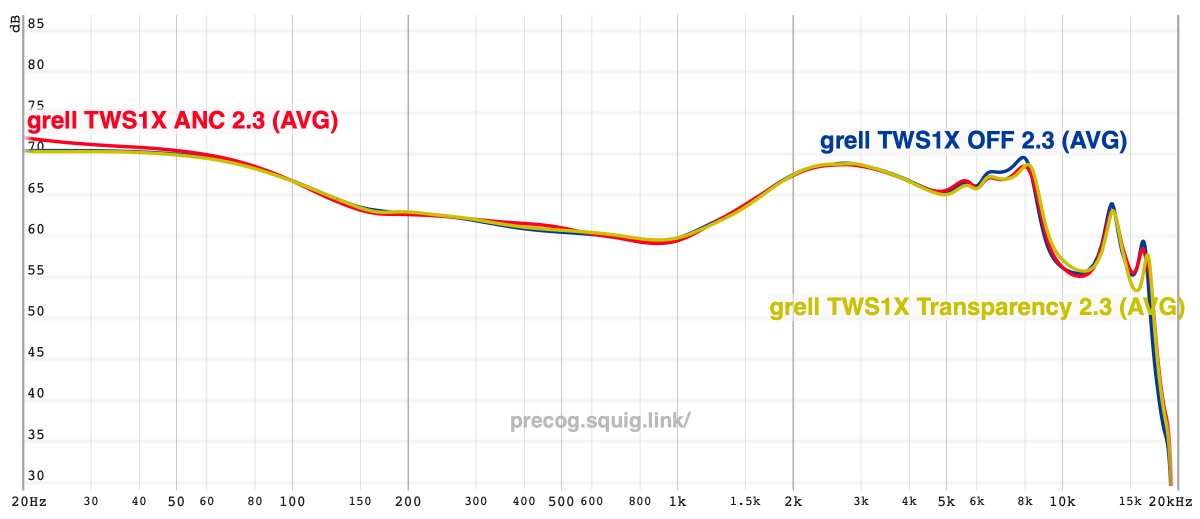
In terms of pure sound quality, the TWS1X surprisingly sounds okay. Not okay within the context of IEMs as a whole, not okay within the context of TWS IEMs, okay within the context of ~$100 TWS IEMs.
The good part: the TWS1X's frequency response is very good. I'd consider this to be somewhere between a neutral-warm or neutral with sub-bass tuning. There's a healthy sub-bass shelf which lends to a good amount of rumble but which doesn't come across bloated thanks to a cut at the 150Hz regions. However, whereas most Harman-tuned IEMs would dip somewhere around this region, the TWS1X gently slopes off into the lower-midrange, lending some extra warmth and smoothness.
This is followed by a moderate rise to the pinna compensation and the upper-midrange for a near-neutral midrange. Then comes the most impressive part of the tuning: an actually competent treble response. Sure, the TWS1X could benefit with some more treble extension (few IEMs don't for $200), but hearing a smooth treble response at this price point is a rarity of itself.
Still, as I alluded to above, I'm not convinced that the TWS1X is packing $200 sound quality. I suspect that there's a generous amount of DSP going on to achieve the TWS1X's excellent tuning; in any case, the TWS1X's intangible performance can be best summarized as “compressed”. This is an audiophile buzzword which I would define as being a transducer’s inability to scale decibel gradations in music.
It can also present itself, to a degree, in the pattern of decay; in this instance, I find that the TWS1X has a very dry characteristic to its treble response. To be fair, it is possible that this is simply attributable to the audio codec of the TWS1X when paired with iOS devices. But even by standard metrics of technicalities such as resolution and note definition, I think you'd be looking at "C" tier technical performance here. I find the original Samsung Galaxy Buds and Apple AirPods Pros, for example, to be noticeably more technical than the TWS1X.
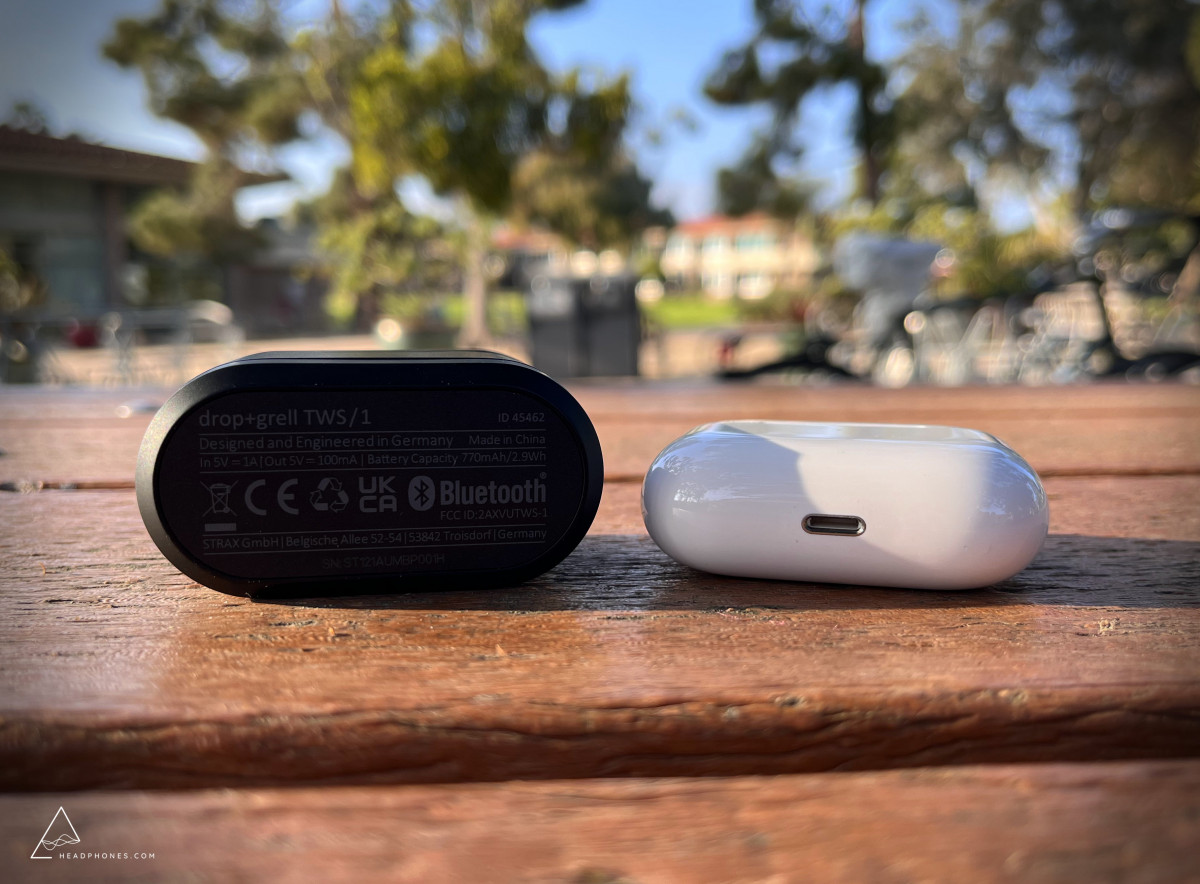
The Verdict
In my opinion? I have to be perfectly frank when I say that the TWS1X comes across more as a proof-of-concept than as a finished product. While the latest update to 3.0 firmware irons out some of the major software bugs, the sound quality itself is still not commensurate with what I'd expect from a premium TWS IEM. Likewise, while the software updates are welcomed, it's highly concerning that such an unrefined product made it to the production phase altogether. Ultimately, the TWS1X promises big things on paper and I can appreciate the lofty goals that Grell Audio and Drop set for themselves, but the end product would suggest otherwise.
-Precogvision
Watch the video review here:
